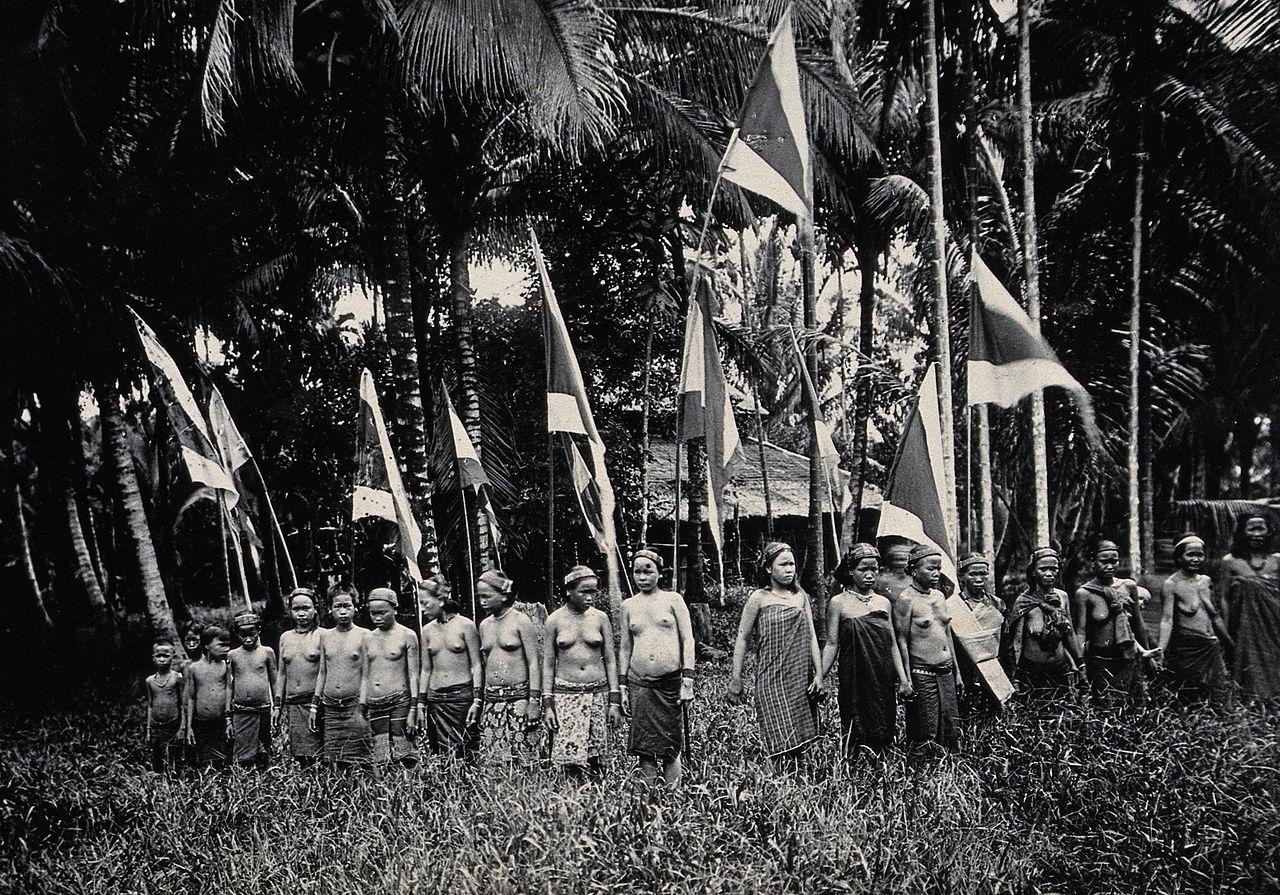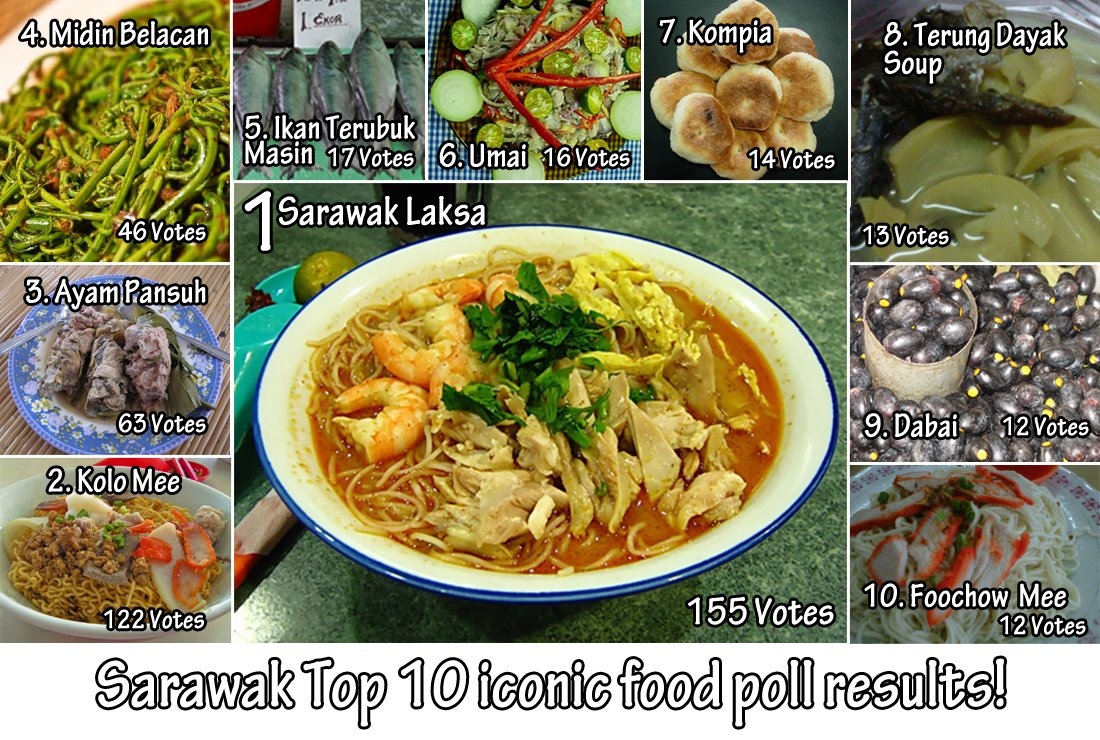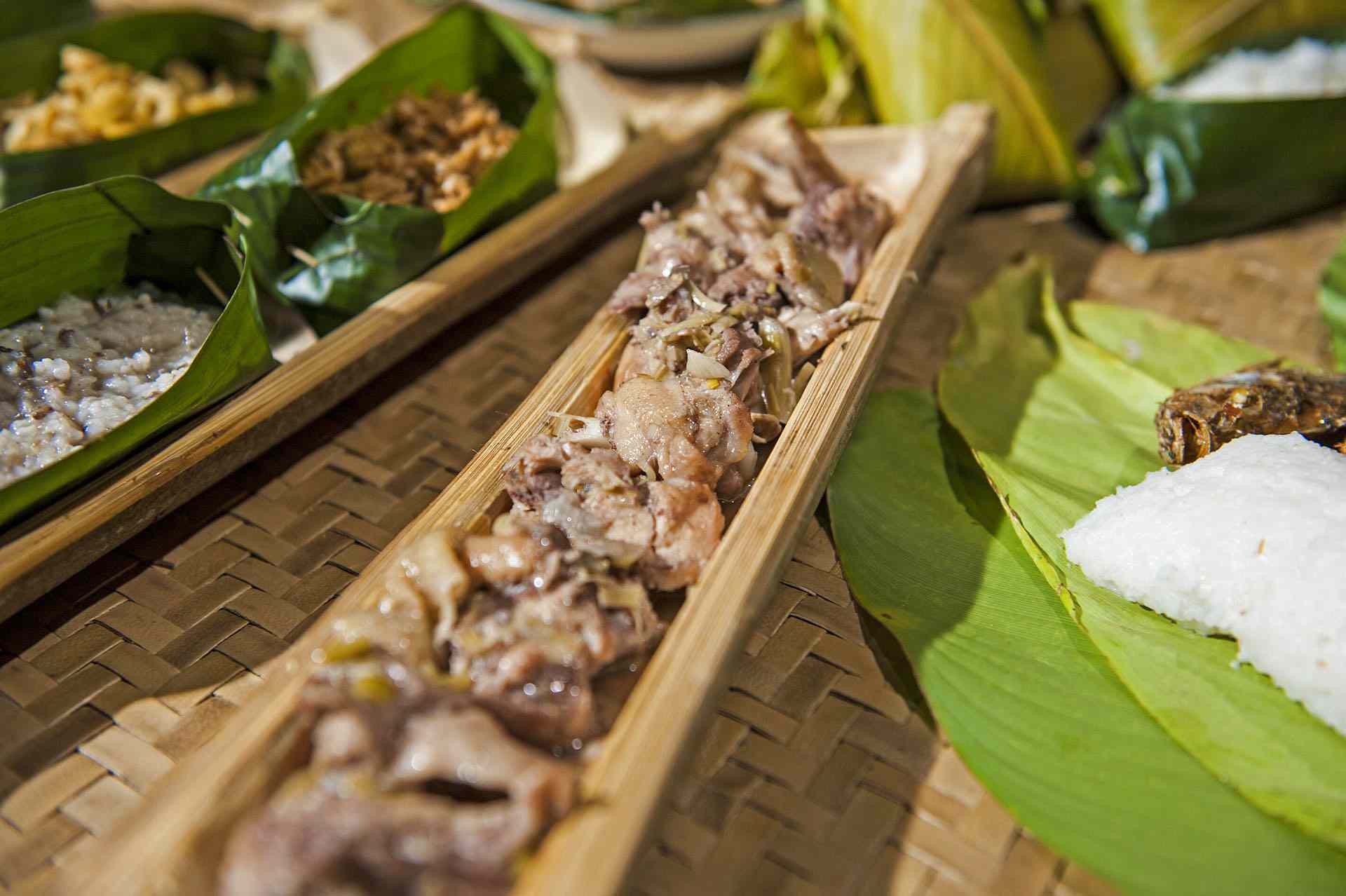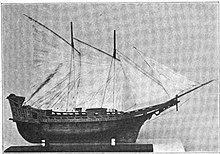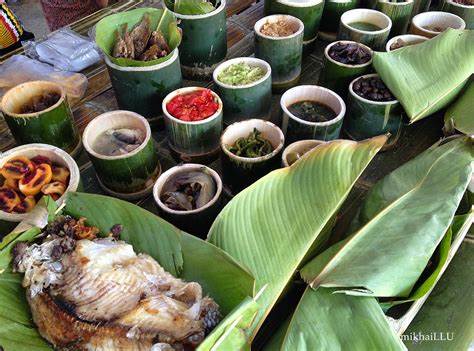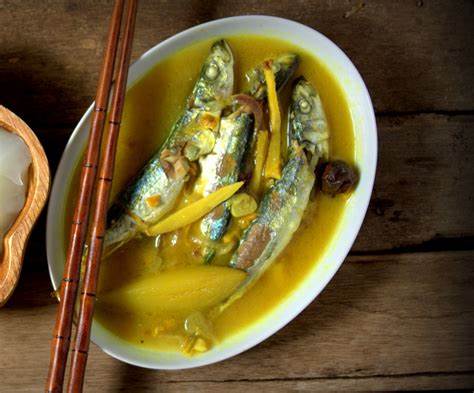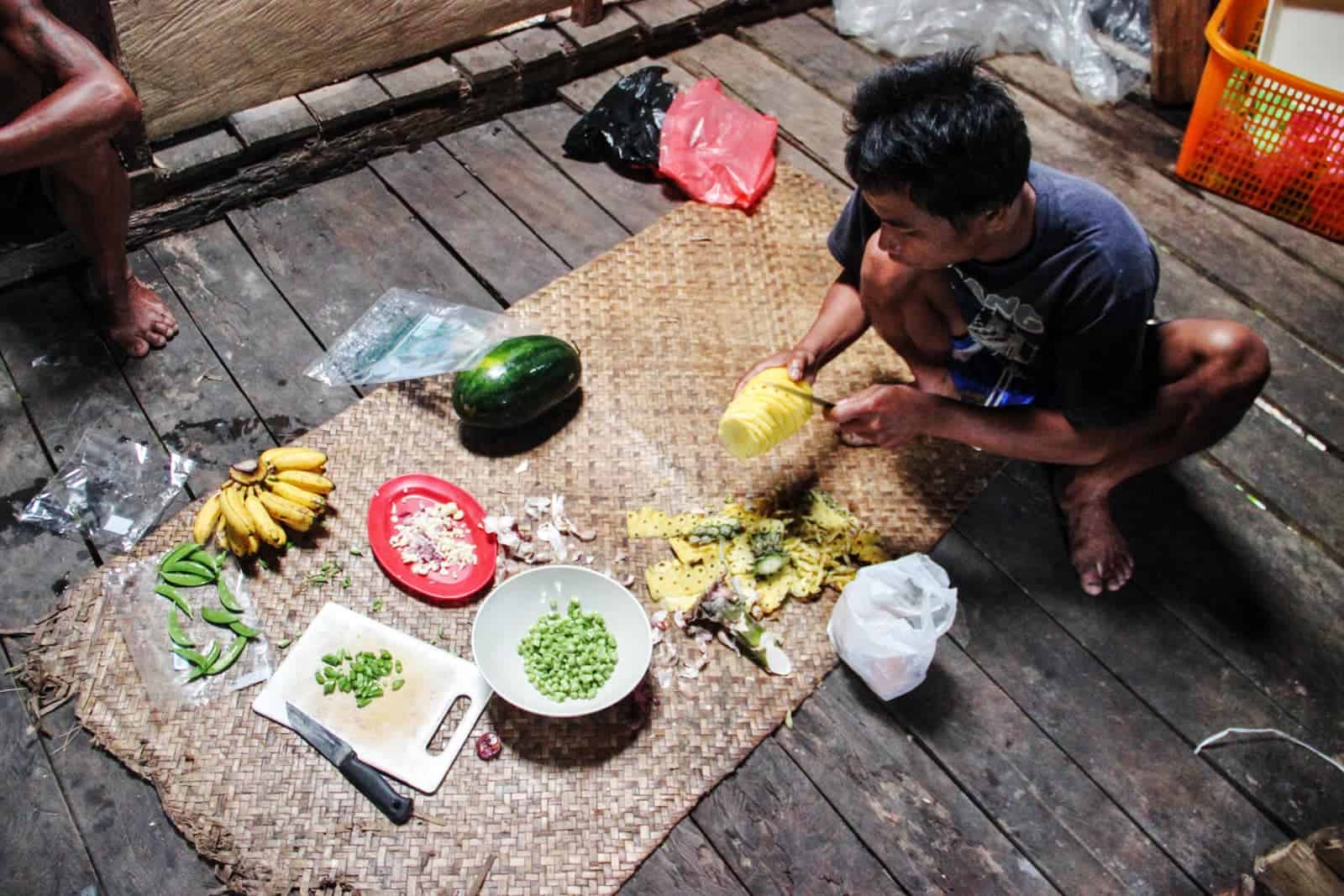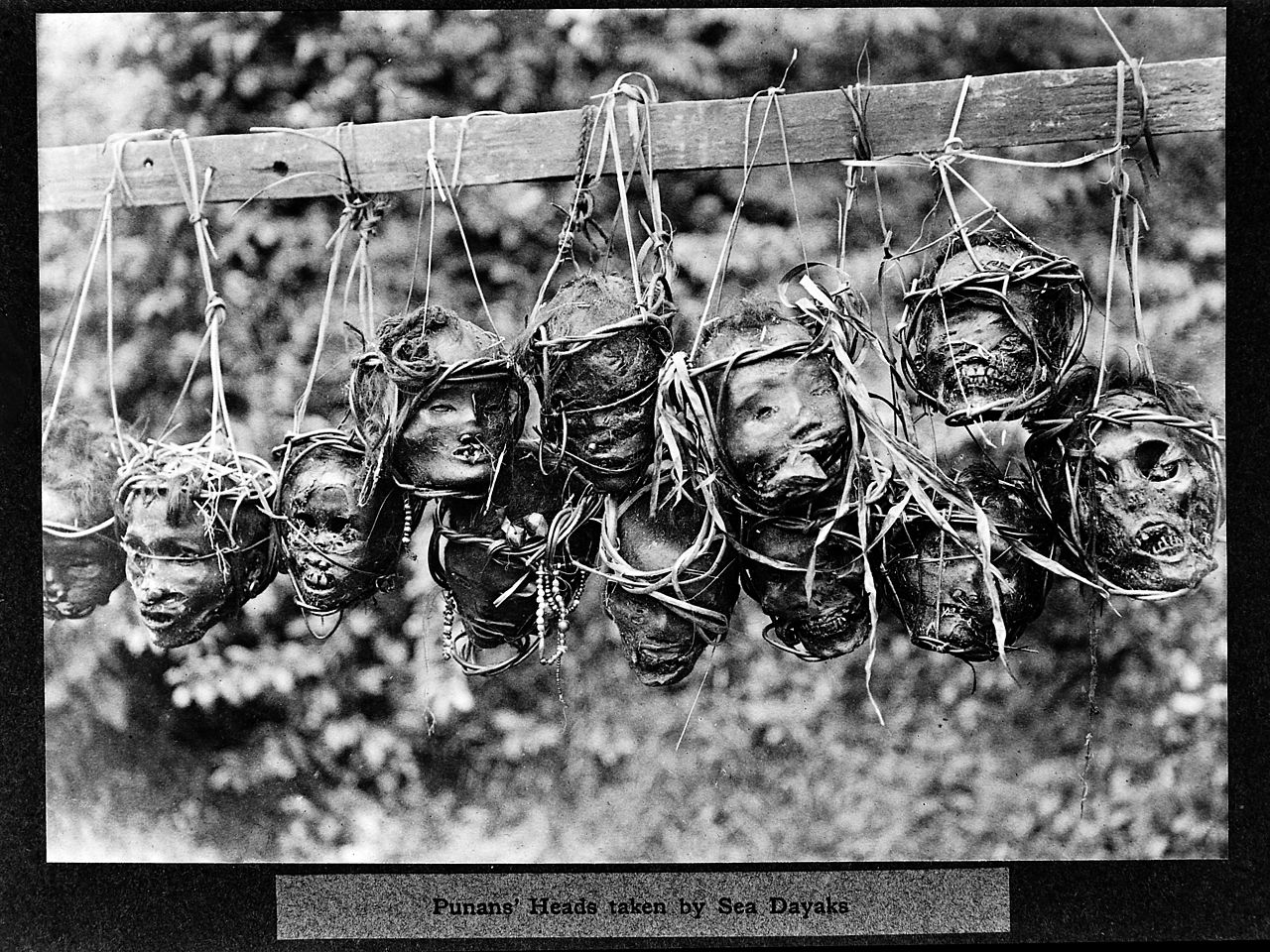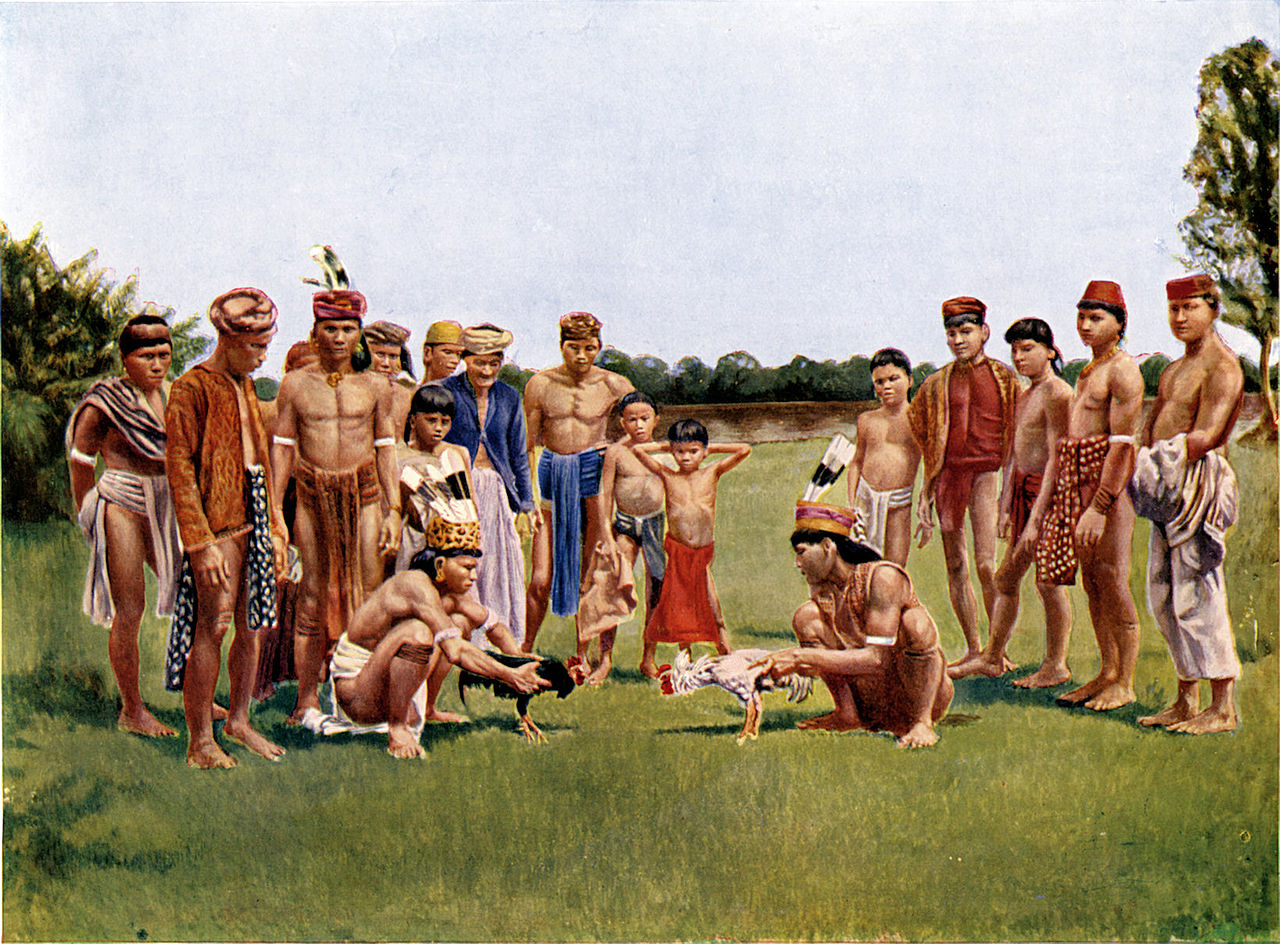
AsianOverland.net
Tour Guide - Itinerary
Asian Overland Sydney to London
Started 22/06/2022 Finished 21/06/2023365 Days ITINERARY
Day 49 date 09/08/2022NIAH CAVES to SIBU, SARAWAK, MALAYSIA
ASIANOVERLAND.NET SYDNEY TO LONDON DAY 49: NIAH CAVES TO SIBU, SARAWAK, MALAYSIA
The drive south along the west coast of Borneo from Miri to Sibu and then Kuching, continues the pattern of rainforest deforestation, usually replaced by Palm plantations or towns, with continuing devastation of the rainforest habitat, and destruction of the orangutan homelands. Before European colonisation, there was only jungle, no roads, and few tracks, as the River People travelled on the rivers, and the Iban people or Sea Dayaks travelled by sea.
The Sea Dayaks dominated the waters of South China Sea off the west coast of Borneo, being maritime tribes who fight chiefly in canoes and boats. One of their favourite tactics is to conceal some of their larger boats, and send some small and badly manned canoes forward to attack the enemy and lure them. The canoes then retreat, followed by the enemy, and as soon as they pass the spot where the larger boats are hidden, they are attacked in the rear, while the smaller canoes, which have acted as decoys, turn and join in the fight. The rivers are chosen for this kind of attack, the overhanging branches of trees and the dense foliage of the bank affording excellent hiding places for the Sea Dayak boats, as well as the orangutans.
Many of the Sea Dayaks were called pirates by the European colonisers, although that was the pot calling the kettle black. In the 19th century there was a great deal of piracy, and it was secretly encouraged by the Brunei, Dayak and Malay rulers, who shared the spoils. A pirate fleet could consist of a large number of long war boats or prahu, each about 27 m long, and carrying a brass gun in the bow, the pirates being armed with swords, spears and muskets. Each boat could be paddled by up to 80 men. These boats hid in the sheltered coves waiting for their prey, and attacked merchant vessels making the passage between China and Singapore, the same route travelled by Marco Polo on his return from China.
The Dayak and Malay pirates would wreck and destroy trading vessels, murder the crew who offered resistance, and make slaves of the survivors. The Dayak would cut off the heads of those who were killed, smoke them over the fire to dry them, and take them home as valued possessions.
In Sarawak, the south-western region of Borneo, "White Rajah" James Brooke and his descendants used gunboat diplomacy on the Sultan of Brunei, and established a colonial dynasty.
Brooke first encountered the headhunting Iban in Sarawak at the Battle of Betting Maru in 1849, and subsequently signed the Saribas Treaty with the Iban chief. Subsequently, the Brooke dynasty expanded their territory to the present-day state of Sarawak. They enlisted Malay, Iban, and other indigenous people as an unpaid force to defeat and pacify any rebellions. The Brooke administration prohibited headhunting and issued penalties for disobeying the Rajah-led government decree. During expeditions sanctioned by the Brooke administration, they allowed headhunting. The indigenous people who participated in Brooke-approved punitive expeditions were exempted from paying annual tax to the Brooke administration.
One famous Iban warrior who resisted the authority of the Brooke administration was Libau "Rentap". The Brooke government had to send three successive punitive expeditions in order to defeat Rentapi at his fortress on the top of Sadok Hill. Brooke's forces suffered major defeats during the first two expeditions. During the third and final expedition, Brooke built a large cannon called Bujang Sadok (Prince of Sadok Mount) to rival Rentap's cannon nicknamed Bujang Timpang Berang (The One Arm Bachelor) and made a truce with the sons of the famous chief.
The Iban food includes Pansoh or lulun, a dish of rice or other food cooked in cylindrical bamboo sections (ruas) with the top end cut open to insert the food while the bottom end remains uncut to act as a container. A middle-aged bamboo tree is chosen to make containers because its wall still contains water; old, mature bamboo trees are drier and are burned by fire too easily. The bamboo imparts the famous and addictive special bamboo taste or flavour to the cooked food or rice. In the old days, there were no metal pots and bamboo cylinders were used to cook food.
Kasam is preserved meat, fish or vegetable. In the absence of refrigerators, jungle meat from wild game, fish or vegetable are preserved by cutting into small pieces and mixing with salt before placing in a ceramic jar or more recently, glass jars. Ceramic jars were precious in the old days as food containers. Meat and fish preserved in this manner can last for several months. Preserved meats are mixed with local leaf and nut.
Tuak is an Iban wine traditionally made from cooked glutinous rice mixed with home-made yeast containing herbs for fermentation. It is used to serve guests, especially as a welcoming drink when entering a longhouse. Tuak and other drinks (both alcoholic and non-alcoholic) can be served in several rounds during a ceremony as a thirst quenching drink, a foot washing drink, a respect drink and a profit drink.
The Iban like to preserve foods by smoking them over the hearth. Smoked foods are called 'salai' and are eaten directly, with vegetables and rice.
The Iban traditional cakes are called 'penganan', and 'tumpi' (deep fried but not hardened) and chuwan' and 'sarang semut' (deep fried to harden and to last long).
© This work is copyright. Apart from any use permitted under the Copyright Act 1968, no part may be reproduced by any process, nor may any other exclusive right be exercised, without the permission of Peter Searle, peter@portseavillageresort.com; 1980-2024.
Website built by Justin O’Dea www.webdeveloperdocklands.com.au
